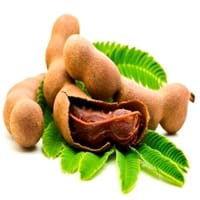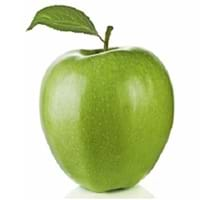Health Benefits
Boosts immune system, Boosts respiratory health, Cancer prevention, Digestive aid, Piles treatment
Cancer prevention, Supports healthy Liver function, Diarrhea treatment, Heart care, Increases metabolic rate, Neutralizes irritable bowel syndrome, Helps Prevent cataract, Prevents constipation, Prevents gall stones, Prevents high blood pressure, Helps prevent Parkinson's disease, Reduces risk of asthma, Treatment of alzheimer's disease
General Benefits
Beneficial in improving nerve function, Protects against parasites and worms, Relieves pain
Boosts immune system, Helps in weight loss, Maintains healthy cholesterol level, Whitens teeth
Skin Benefits
Anti-aging benefits, Brightens and lightens complexion, Exfoliates skin, Hydrates skin, Treatment of dark spots
Anti-aging benefits, Brightens and lightens complexion, Hydrates skin, Treatment of acne, Treatment of dark spots, Treatment of puffy eyes
Hair Benefits
Prevents hair loss
Prevents hair loss, Promotes longer and healthier hair, Regulates hair growth, Treatment of dandruff
Allergy Symptoms
Abdominal pains, Breathing difficulty, Dizziness, Eczema, Fainting, Hives, Itching, Nasal congestion, Swelling of face, Tingling sensation in mouth, Vomiting
Abdominal pains, Itching, Swelling of mouth, tongue or lips, Vomiting
Side Effects
Decrease in blood sugar levels, Induces acid reflux, Allergic reaction, Tooth decay, May form gallstones
Allergic reaction, May consist of poisonous seeds
Best Time to Eat
Along with meal, As a snack in the late afternoon, Don't consume at night and before bed, Strictly avoid empty stomach
Any time except an hour after meal, Best if taken as a breakfast (or empty stomach), Don't consume at night and before bed
Vitamin B5 (Pantothenic Acid)
Vitamin C (Ascorbic Acid)
Vitamin K (Phyllochinone)
Calories in Fresh Fruit with Peel
Not Available
Calories in Fresh Fruit without Peel
Calories in Canned Form
Not Available
Season
Spring, Summer
All seasons
Varieties
PKM 1, Urigam, Hasanur, Tumkur prathisthan, DTS 1 and Yogeshwari
Red Delicious, Golden Delicious, Gala, Fuji, Granny Smith, Arkansas Black, Sampion, Pink Lady, Cameo, Jonagold, Mc Intosh, Ananasrenette, Lobo, Pacific Rose, Yellow transparent and Bramley
Color
Brown, Reddish-brown
Green, Red, Yellow
Shape
Curving Cylinder
Round
Taste
Sour-Sweet
Sweet, Sweet-Sour
Origin
Africa
Central Asia, Middle East Asia
Soil Type
Loam, Sandy, Sandy loam, Well-drained
Loam
Climatic Conditions
Humid to dry, Rainfall, Warm to hot climate
Cold
Facts about
- Tamarind is used to prevent body odor.
- African children use the tamarind seeds in games.
- No cases of tamarind toxicity or allergy reported till date.
- Apples can be as small as a pea and as big as a pumpkin.
- There are more than 8000 varieties of apples.
- Life of an Apple tree can be more than 100 years.
- Apples contain 25% air, therefore they float in water.
Other Countries
Africa, Australia, Brazil, China, Mexico, Nigeria, Sudan, Taiwan
Chile, France, India, Iran, Italy, Poland, Russia, Turkey, United States of America
Top Importer
United States of America
Russia
Top Exporter
Thailand
China
Botanical Name
Tamarindus indica
Malus Domestica
Synonym
Tamarindo, tamarindus
Malus Communis or Malus Pumila or Pyrus Malus
Subkingdom
Tracheobionta
Tracheobionta
Division
Magnoliophyta
Magnoliophyta
Class
Liliopsida
Magnoliopsida
Species
Tamarindus indica
M. domestica
Generic Group
Tamarind Sub
Rose
Difference Between Tamarind and Green apple
We might think that Tamarind and Green apple are similar with respect to nutritional value and health benefits. But the nutrient content of both fruits is different. Tamarind and Green apple Facts such as their taste, shape, color, and size are also distinct. The difference between Tamarind and Green apple is explained here.
The amount of calories in 100 gm of fresh Tamarind and Green apple with peel is Not Available and 52.00 kcal and the amount of calories without peel is 239.00 kcal and 48.00 kcal respectively. Thus, Tamarind and Green apple belong to High Calorie Fruits and Low Calorie Fruits category.These fruits might or might not differ with respect to their scientific classification. The order of Tamarind and Green apple is Fabales and Rosales respectively. Tamarind belongs to Fabaceae family and Green apple belongs to Rosaceae family. Tamarind belongs to Tamarindus genus of Tamarindus indica species and Green apple belongs to Malus genus of M. domestica species. Beings plants, both fruits belong to Plantae Kingdom.









